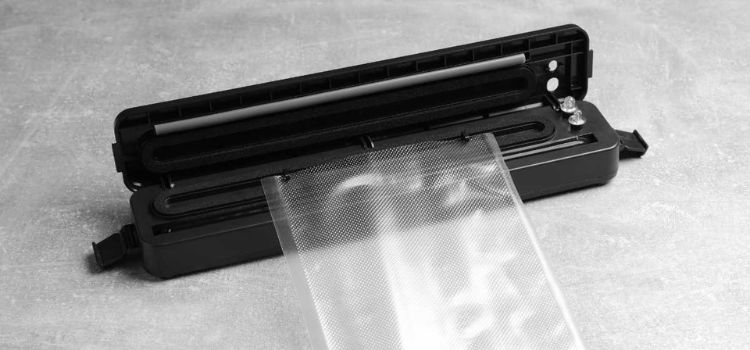As an Amazon Associate, I earn from qualifying purchases

If you’ve ever found yourself in the midst of meal prep only to discover that your trusty vacuum sealer isn’t doing its job, you’re not alone. Many users experience the frustration of a vacuum sealer that simply won’t vacuum, leaving food exposed to air and prone to spoilage.
Understanding why your vacuum sealer isn’t working properly is crucial to ensuring it serves its purpose efficiently. This article will guide you through identifying potential causes of vacuum sealing issues, offer troubleshooting tips, and provide maintenance advice to keep your vacuum sealer in top shape.
Potential Causes of Vacuum Sealer Issues
There are several reasons why your vacuum sealer might not be vacuuming effectively. These include equipment problems, user errors, and environmental factors.
Equipment Problems
Equipment issues are often at the root of vacuum sealer malfunctions. Mechanical failures, such as worn-out gaskets or faulty seals, can prevent the machine from creating the necessary vacuum. Additionally, it’s important to check that the power supply is intact and that all connections are secure. If the machine doesn’t power on or makes unusual noises, it could indicate an internal problem requiring professional repair.
Over time, the parts of a vacuum sealer can wear out, especially if it’s used frequently. The gasket, which is the rubber piece that forms the seal, can degrade, preventing a tight seal. Similarly, the heat strip, which seals the bag, can burn out or become misaligned.
User Errors
Often, user errors are to blame when a vacuum sealer isn’t functioning correctly. Common mistakes include improper bag placement, overfilling the bags, or using the wrong type of bag. It’s crucial to ensure that the bag’s open end is correctly positioned in the sealer and that there’s enough space for the air to escape.
Using incorrect settings for different food types can also lead to inadequate sealing. For example, using a setting meant for dry foods on a moist item can prevent a proper vacuum from forming.
Environmental Factors
Environmental conditions like temperature and humidity can greatly affect the vacuum sealing process. If the room is too humid, moisture can interfere with the sealing process, leading to poor seals. Similarly, if the temperature is too high, the sealer might overheat, causing it to malfunction.
Operating your vacuum sealer in a suitable environment can make a significant difference. Ensure that your kitchen or workspace is cool and dry, and avoid using the machine under extreme conditions.
Troubleshooting Steps

When your vacuum sealer isn’t working, there are several troubleshooting steps you can take to resolve the issue.
- For Equipment Problems: Start by examining your vacuum sealer for any visible signs of wear and tear. Check the gasket and heat strip for damage and replace them if necessary. Ensure that all connections are tight and that the power supply is working properly. If the machine still doesn’t work, consult the manufacturer’s manual or consider professional repair.
- For User Errors: Review the instruction manual to ensure you’re using the vacuum sealer correctly. Practice proper bag alignment and filling techniques, making sure not to overfill the bags. Choose the right settings for the food you’re sealing, and always use bags that are compatible with your machine.
- For Environmental Factors: Adjust your workspace to create optimal conditions for vacuum sealing. Use the sealer in a cool, dry area, and consider using a dehumidifier if humidity is an issue. This will help prevent moisture from affecting the sealing process and ensure better results.
Maintenance Tips to Prevent Future Problems
Regular maintenance can help prevent future vacuum sealer issues and extend the life of your machine.
- Clean Regularly: Wipe down your vacuum sealer after each use to prevent residue build-up. Pay special attention to the gasket and heat strip, as food particles can interfere with their function.
- Inspect and Service: Schedule regular inspections to check for worn-out parts. Replace any components that show signs of wear. Periodic servicing by a professional can also help keep the machine in optimal condition.
- Proper Storage: When not in use, store your vacuum sealer in a safe, dry place. Avoid placing heavy objects on top of it, as this could damage the machine.
Conclusion
Understanding why your vacuum sealer isn’t vacuuming effectively is the first step toward resolving the issue. By identifying potential causes and applying appropriate troubleshooting steps, you can restore your vacuum sealer to full functionality.
Regular maintenance and proper usage will help prevent future problems, allowing you to enjoy the convenience and benefits of vacuum sealing. We encourage you to apply these solutions and share your experiences, fostering a community of support and learning in the realm of food preservation.
FAQ
Why is my vacuum sealer not vacuuming properly?
Your vacuum sealer might not be vacuuming properly due to equipment issues like worn-out gaskets or user errors such as improper bag placement. Ensure the bag is correctly aligned, check for any mechanical faults, and verify that the environment is suitable—cool and dry conditions are ideal.
Why is my vacuum not suctioning?
If your vacuum isn’t suctioning, it could be due to a clogged filter, a full dustbin, or a blockage in the hose. Check and clean these areas regularly. Additionally, inspect the brush roll for tangles and ensure all connections are secure for optimal performance.
Can a vacuum sealer seal without vacuuming?
Yes, many vacuum sealers have a seal-only option that allows you to seal bags without vacuuming. This feature is useful for keeping delicate items intact or for resealing chip bags. Simply select the seal-only mode to create an airtight seal without removing air from the bag.
As an Amazon Associate, I earn from qualifying purchases